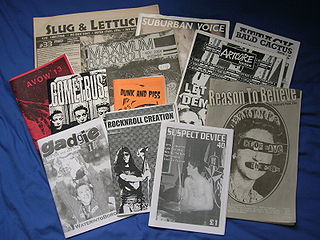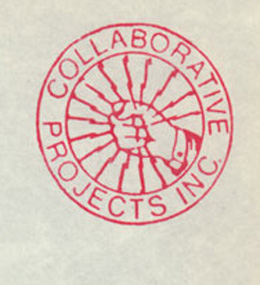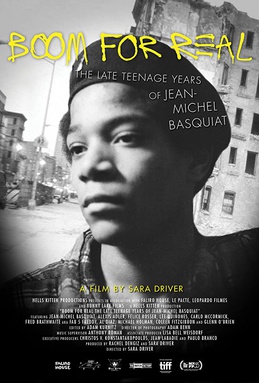Related Research Articles
No wave was an avant-garde music genre and visual art scene that emerged in the late 1970s in Downtown New York City. The term was a pun based on the rejection of commercial new wave music. Reacting against punk rock's recycling of rock and roll clichés, no wave musicians instead experimented with noise, dissonance, and atonality, as well as non-rock genres like free jazz, funk, and disco. The scene often reflected an abrasive, confrontational, and nihilistic world view.

Ludlow Street runs between Houston and Division streets on the Lower East Side of Manhattan in New York City. Vehicular traffic runs south on this one-way street.

Tom Otterness is an American sculptor who is one of America's most prolific public artists. Otterness's works adorn parks, plazas, subway stations, libraries, courthouses and museums around the world, notably in New York City's Rockefeller Park in Battery Park City and Life Underground in the 14th Street – Eighth Avenue New York Subway station. He contributed a balloon to the Macy's Thanksgiving Day Parade. In 1994 he was elected as a member of the National Academy Museum.

ABC No Rio is a collectively-run non-profit arts organization on New York City's Lower East Side. It was founded in 1980 in a squat at 156 Rivington Street, following the eviction of the 1979–80 Real Estate Show. The centre featured an art gallery space, a zine library, a darkroom, a silkscreening studio, and public computer lab. In addition, it played host to a number of radical projects including weekly hardcore punk matinees and the city Food Not Bombs collective.
No wave cinema was an underground filmmaking movement that flourished on the Lower East Side of New York City from about 1976 to 1985. Associated with the artists’ group Collaborative Projects, no wave cinema was a stripped-down style of guerrilla filmmaking that emphasized dark edgy mood and unrehearsed immediacy above many other artistic concerns – similar to the parallel no wave music movement in its raw and rapid style.

Punk visual art is artwork associated with the punk subculture and the no wave movement. It is prevalent in punk rock album covers, flyers for punk concerts and punk zines, but has also been prolific in other mediums, such as the visual arts, the performing arts, literature and cinema. Punk manifested itself "differently but consistently" in different cultural spheres. Punk also led to the birth of several movements: new wave, no wave, dark wave, industrial, hardcore, queercore, etc., which are sometimes showcased in art galleries and exhibition spaces. The punk aesthetic was a dominant strand from 1982 to 1986 in the many art galleries of the East Village of Manhattan.

Colab is the commonly used abbreviation of the New York City artists' group Collaborative Projects, which was formed after a series of open meetings between artists of various disciplines.

Joseph Nechvatal is an American post-conceptual digital artist and art theoretician who creates computer-assisted paintings and computer animations, often using custom computer viruses.
The Gowanus Memorial Artyard was a nonprofit, artist-organized group that put together massive outdoor and indoor art exhibitions in Gowanus, Brooklyn, New York City in the early 1980s. Founded by artists and curators Michael Keene, Frank Shifreen, and George Moore, the shows featured monumental sculpture parks next to the Gowanus Canal. The two major shows attracted thousands of visitors during their brief runs in 1981 and 1982. The participants artists such as Carl Andre, Andy Warhol-sponsored Keith Haring, Christo, Linda and Terry Jamison, Vito Acconci, Nancy Holt, John Fekner, the controversial Chris Burden, sculptor Jim Nickel, and Fred Wilson.

Walter Robinson is an American painter, publisher, art curator, and art writer, based in New York City. He has been called a Neo-pop painter, as well as a member of the 1980s The Pictures Generation. Robinson is the subject of the 632 page book A Kiss Before Dying: Walter Robinson – A Painter of Pictures and Arbiter of Critical Pleasures by Richard Milazzo published in 2021 with an Italian translation by Ginevra Quadrio Curzio.

James Allan Curtis, known professionally as Diego Cortez, was an American filmmaker and art curator closely associated with the no wave period in New York City. Cortez was the co-founder of the Mudd Club, and he curated the influential post-punk art show New York/New Wave, which brought the then aspiring artist Jean-Michel Basquiat to fame.
Boris Policeband was a no wave noise music performer who used dissonant violin, police radio transmissions, and voice. Boris Pearlman was a classically trained violist from New York City.
Coleen Fitzgibbon is an American experimental film artist associated with Collaborative Projects, Inc.. She worked under the pseudonym Colen Fitzgibbon between the years 1973–1980.
Mitch Corber is a New York City neo-Beat poet, an eccentric performance artist, and no wave videographer known for his rapid whimsically comical montage and collage style. He has been associated with Collaborative Projects, Inc., participated in Public Arts International/Free Speech and The Times Square Show, and is creator-director of cable TV long-running weekly series Poetry Thin Air in New York City and its on-line poetry/video archive. He has worked closely with ABC No Rio, Colab TV and the MWF Video Club and his audio art have been published on Tellus Audio Cassette Magazine three times. He is a recipient of a NY Foundation for the Arts Fellowship grant (1987) in the field of emerging artforms.
Robin Winters is an American conceptual artist and teacher based in New York. Winters is known for creating solo exhibitions containing an interactive durational performance component to his installations, sometimes lasting up to two months. As an early practitioner of Relational Aesthetics Winters has incorporated such devices as blind dates, double dates, dinners, fortune telling, and free consultation in his performances. Throughout his career he has engaged in a wide variety of media, such as performance art, film, video, writing prose and poetry, photography, installation art, printmaking, drawing, painting, ceramic sculpture, bronze sculpture, and glassblowing. Recurring imagery in his work includes faces, boats, cars, bottles, hats, and the fool.

The Real Estate Show was a squatted exhibition by New York artists' group Colab, on the subject of landlord speculation in real estate held on New Year's Day in a vacant city-owned building at 123 Delancey Street in the Lower East Side of Manhattan, New York City.

Christy Rupp is an American artist and activist.

Boom for Real: The Late Teenage Years of Jean-Michel Basquiat is a 2017 American documentary film directed by Sara Driver. It tells the story about Jean-Michel Basquiat and the New York City art scene in the late 1970s. The film had its premiere at the 2017 Toronto International Film Festival on September 8, 2017. It was released in the United States on May 11, 2018.

Cave Girls is a 1984 New York No Wave underground film by Kiki Smith created on Super 8 between 1981 and 1984. that makes use of Stan Brakhage-like montage cutting.

The Times Square Show was an influential collaborative, self-curated, and self-generated art exhibition held by New York artists' group Colab in Times Square in a shuttered massage parlor at 201 W. 41st and 7th Avenue during the entire month of June in 1980. The Times Square Show was largely inspired by the more radical Colab show The Real Estate Show, but unlike it, was open 24 hours a day, 7 days a week, in what was then a Times Square full of porno theaters, peep shows, and red light establishments. In addition to experimental painting and sculpture, the exhibition incorporated music, fashion, and an ambitious program of performance and video. For many artists the exhibition served as a forum for the exchange of ideas, a testing-ground for social-directed figurative work in progress, and a catalyst for exploring new political-artistic directions.
References
- ↑ The Journal of Aesthetics & Protest, Art Worker: Doing Time in the New York Artworld
- ↑ "The Formation of ABC NO RIO". Archived from the original on 2017-07-04. Retrieved 2014-12-10.
- ↑ The ABC No Rio Interviews: Alan Moore
- ↑ Alan Moore on theTimes Square Show [usurped]
- ↑ "COLEEN FITZGIBBON AND ALAN MOORE: X MAGAZINE BENEFIT COLAB 1978, 2009". Archived from the original on 2021-01-28. Retrieved 2013-07-10.
- ↑ The Real Estate Show at Kunstpunkt Berlin
- ↑ XFR STN at the New Museum
- ↑ XFR STN at the New Museum
- ↑ "House Magic". HM. Retrieved 15 May 2019.
- ↑ "Creative Capital: Warhol Foundation Arts Writers Grant Program Announces 2012 Grants". The Andy Warhol Foundation for the Visual Arts. Retrieved 15 May 2019.